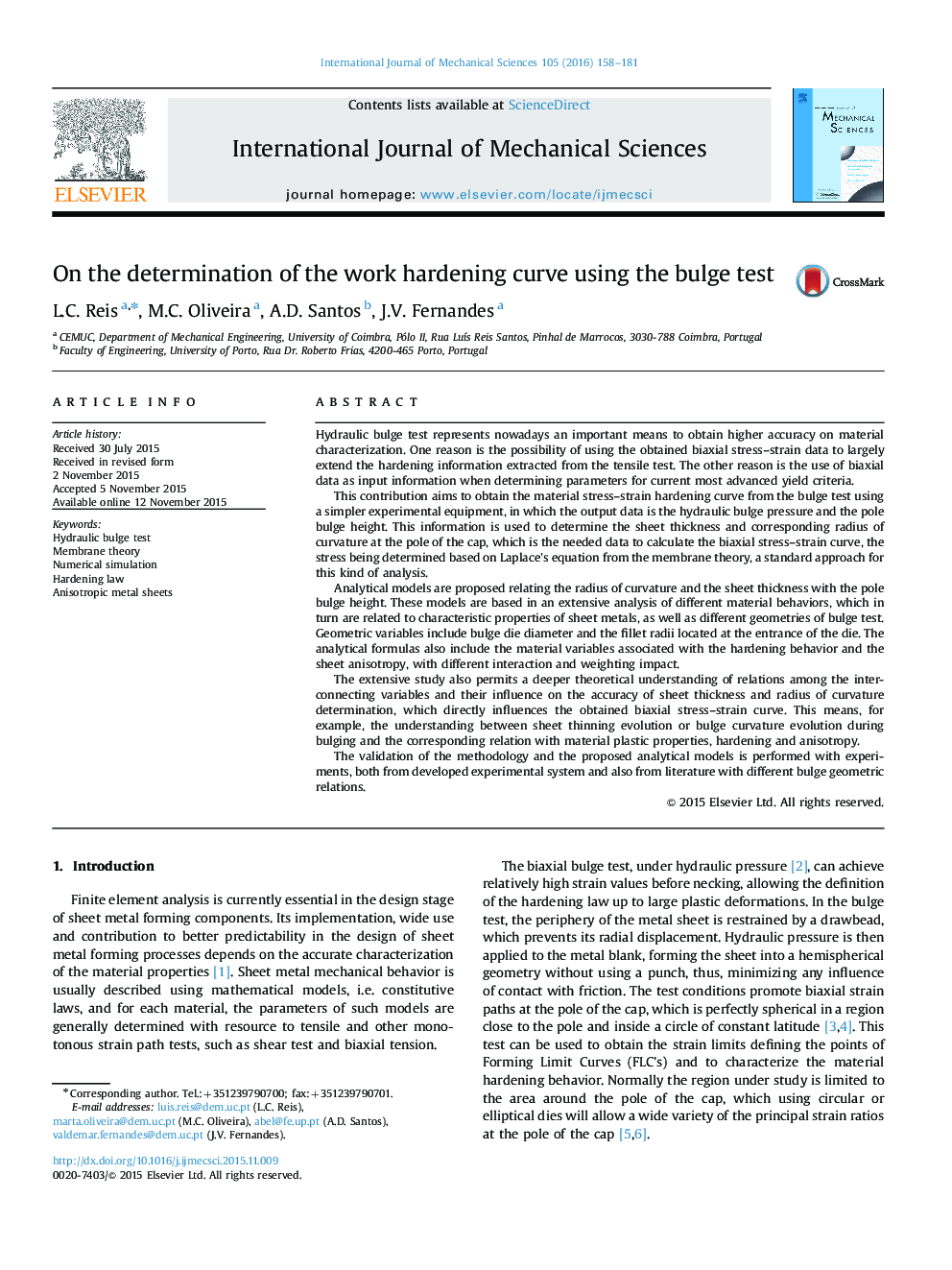| کد مقاله | کد نشریه | سال انتشار | مقاله انگلیسی | نسخه تمام متن |
|---|---|---|---|---|
| 782232 | 1464978 | 2016 | 24 صفحه PDF | دانلود رایگان |
• Effect of hardening and sheet anisotropy on the radius and thickness at the pole cap.
• Study of anisotropic materials and various die geometries.
• Equations for evolution of the curvature radius and sheet thickness during bulge test.
• Numerical and experimental validation, and comparison with previously proposed models.
• Stress–strain curve evaluation with simplified experimental measurement equipment.
Hydraulic bulge test represents nowadays an important means to obtain higher accuracy on material characterization. One reason is the possibility of using the obtained biaxial stress–strain data to largely extend the hardening information extracted from the tensile test. The other reason is the use of biaxial data as input information when determining parameters for current most advanced yield criteria.This contribution aims to obtain the material stress–strain hardening curve from the bulge test using a simpler experimental equipment, in which the output data is the hydraulic bulge pressure and the pole bulge height. This information is used to determine the sheet thickness and corresponding radius of curvature at the pole of the cap, which is the needed data to calculate the biaxial stress–strain curve, the stress being determined based on Laplace׳s equation from the membrane theory, a standard approach for this kind of analysis.Analytical models are proposed relating the radius of curvature and the sheet thickness with the pole bulge height. These models are based in an extensive analysis of different material behaviors, which in turn are related to characteristic properties of sheet metals, as well as different geometries of bulge test. Geometric variables include bulge die diameter and the fillet radii located at the entrance of the die. The analytical formulas also include the material variables associated with the hardening behavior and the sheet anisotropy, with different interaction and weighting impact.The extensive study also permits a deeper theoretical understanding of relations among the interconnecting variables and their influence on the accuracy of sheet thickness and radius of curvature determination, which directly influences the obtained biaxial stress–strain curve. This means, for example, the understanding between sheet thinning evolution or bulge curvature evolution during bulging and the corresponding relation with material plastic properties, hardening and anisotropy.The validation of the methodology and the proposed analytical models is performed with experiments, both from developed experimental system and also from literature with different bulge geometric relations.
Journal: International Journal of Mechanical Sciences - Volume 105, January 2016, Pages 158–181
